Find more information in the General Comments section of the assessment
Find more information in the Rating Validity tab of the assessment
- See More
- See More
- See More
- See More
- Good
- Adequate
- Marginal
- Weak
- Poor
 Passenger
Passenger
 Driver
Driver
 Front Seat
Front Seat
 Car
Car
 Pole
Pole
- Good
- Adequate
- Marginal
- Weak
- Poor


Passenger
outboard
center
Fitted to the vehicle as standard
Not fitted to the test vehicle but available as option
Not Available
Based on dummy readings alone, the car scored maximum points for protection of the 3 year old in the front and side tests. The passenger airbag can be disabled to allow a rearward-facing child restraint to be used in that seating position. However, information provided to the driver regarding the status of the airbag is not sufficiently clear. The presence of ISOFIX anchorages in the rear outboard seats was not clearly marked.
- Good
- Adequate
- Marginal
- Weak
- Poor

Head Impact 7.5 Pts
Pelvis Impact 0.0 Pts
Leg Impact 4.7 Pts
No points were awarded for the protection offered by the front edge of the bonnet to pedestrians' legs. The bonnet provided poor protection in most of the areas likely to hit by an adult's head.
- Good
- Adequate
- Marginal
- Weak
- Poor
| System Name | ESP | |
| Performance | ||
| Applies To | Front seats | ||
| Warning | Driver Seat | Front Passenger(s) | Rear Passenger(s) |
| Visual | |||
| Audible | |||
|
|||
As a result of Euro NCAP's new rating scheme, Mitusbishi have made electronic stability control more widely available. From the middle of February 2009, Mitsubishi Active Stability and Traction Control (MASTC) is available as standard on most Lancer variants and as an option on all others throughout Europe. Consumers should be aware that some cars in stock may not be equipped with MASTC and Euro NCAP encourages them to choose those which are. A seatbelt reminder system for the driver and passenger seats is standard equipment.
- Specifications
- Safety Equipment
- Videos
- Rating Validity
Specifications
Tested Model Mitsubishi Lancer Sportback 1.8 Invite, LHD
Body Type - 5 door hatchback
Year Of Publication 2009
Kerb Weight 1385kg
VIN From Which Rating Applies - applies to cars ordered from February 18 2009
Class Small Family Car
Safety Equipment
Note: Other equipment may be available on the vehicle but was not considered in the test year.
Fitted to the vehicle as standard
Fitted to the vehicle as option
Not fitted to the test vehicle but available as option
Not Available
Not Applicable
Videos
Rating Validity


Find more information in the General Comments section of the assessment
 Share
Share
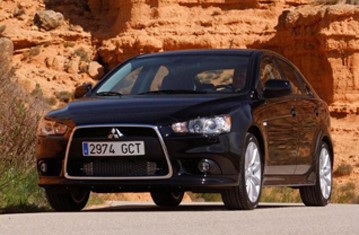
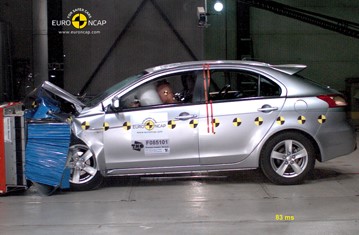
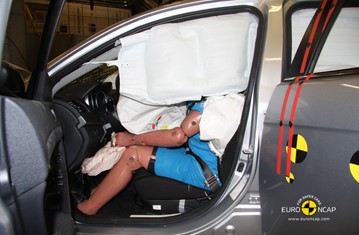
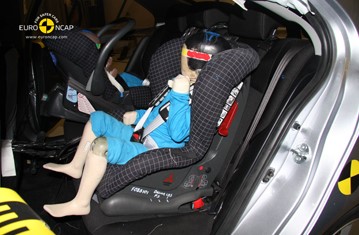
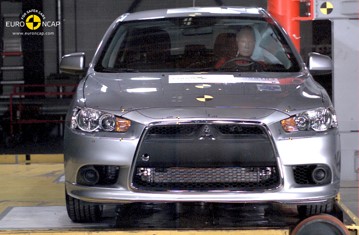
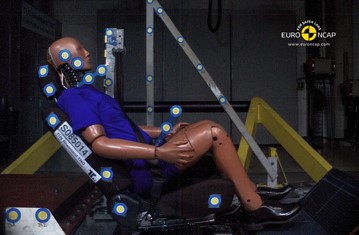




The passenger compartment remained stable during the frontal impact. Dummy readings suggested that the head of the driver had 'bottomed-out' the airbag. Without the penalty applied for this, the driver would have scored maximum points for all body regions. The knees and femurs of both the driver and passenger were well protected during the test. Mitsubishi showed that the same level of protection would be offered to occupants of different sizes or those sat in different positions. In the side barrier impact, protection was rated as good for all parts of the body. However, although it did not open, the driver's door became unlatched and the car was penalised. In the side pole test, protection of the chest was rated as weak owing to the extent of rib deflection, and protection of the abdomen was marginal. The protection offered against whiplash injury was also rated as marginal.